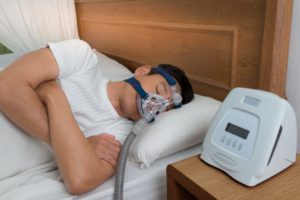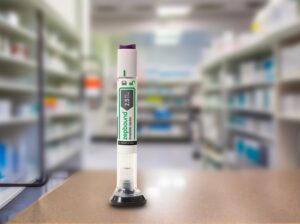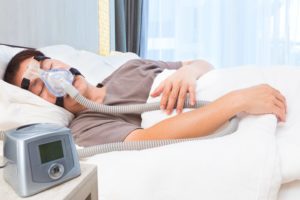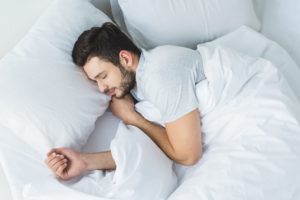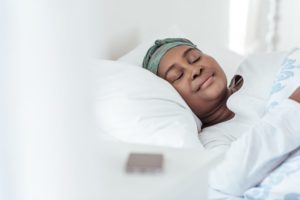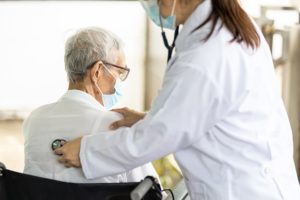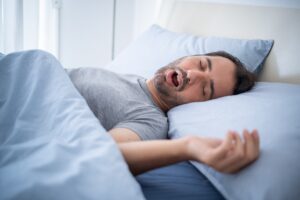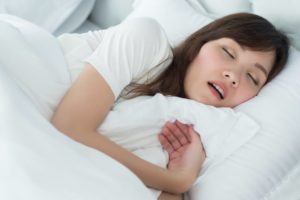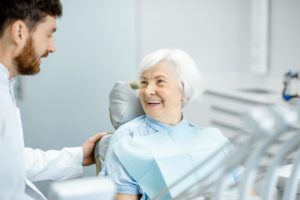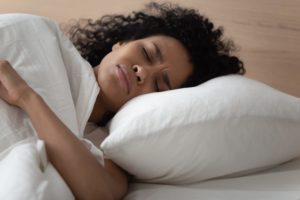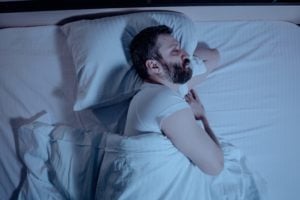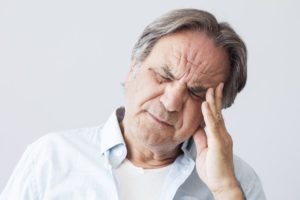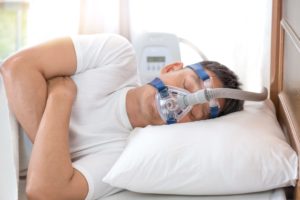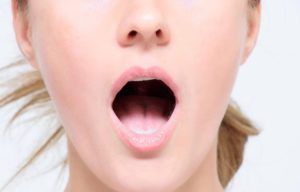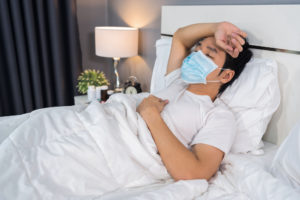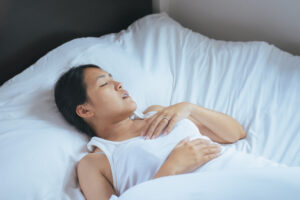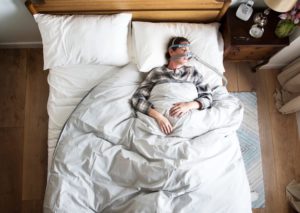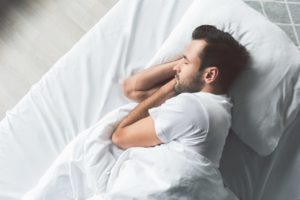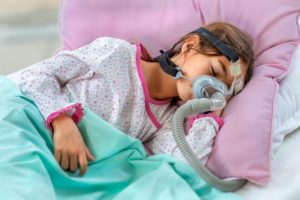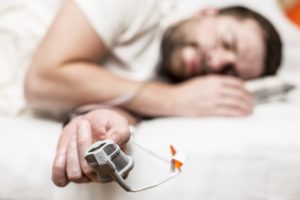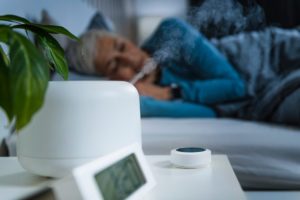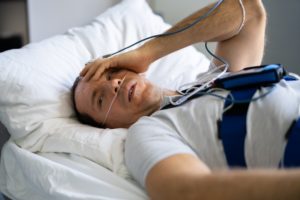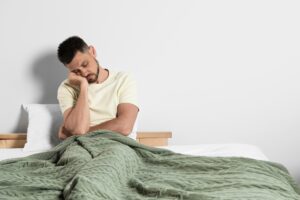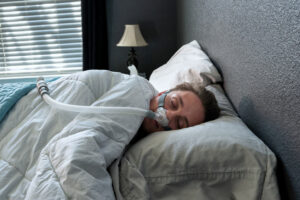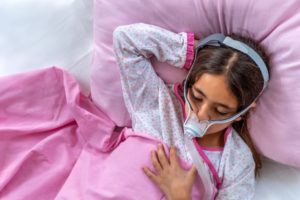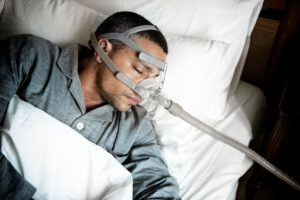When you buy through our links, we may earn a commission. Products or services may be offered by an affiliated entity. Learn more.
What Is Inspire Sleep Apnea Treatment and Does It Work?
- For a subset of patients with sleep apnea who cannot use CPAP therapy, a surgical solution called “Inspire Sleep Apnea Innovation” could be worth exploring.
- Inspire is an outpatient procedure, during which a monitoring device and nerve stimulator are implanted in the patient to help keep their airways open during sleep.
- Clinical studies show the procedure can be effective, but patients must meet specific criteria to be good candidates.
In the United States, obstructive sleep apnea (OSA) affects an estimated 2% to 9% of the adult population, though experts believe there are a substantial number of undiagnosed cases. People with OSA cannot breathe properly while sleeping due to a physical blockage in their upper airway. It can cause people to snore, stop breathing, gasp, choke, and wake up suddenly.
People with OSA report daytime sleepiness, headaches, shortened attention span, and brain fog. Living with OSA is also associated with more serious health risks like stroke, heart disease, high blood pressure, and heart attack. Both lifestyle and genetic factors can cause sleep apnea. While there is no cure, treatment can reduce the risk of heart and blood pressure-related problems as well as increase sleep quality.
For some people who are prescribed continuous positive air pressure (CPAP) therapy to treat their OSA, a comfortable night’s sleep can be elusive. Even though CPAP is considered effective treatment for sleep apnea, CPAP therapy requires patient compliance in order to work well and not everyone takes to it right away. When the Inspire Sleep Apnea Treatment was introduced to the public in the 2010s, some people found the idea of a one-and-done procedure very appealing.
Below, we’ll take an in-depth look at the Inspire Sleep Apnea Treatment and explain how it works, who is eligible, and which side effects may potentially occur. We’ll also cover success rates, what you should expect to pay for treatment, how it feels inside your body, and what to expect in the years following implantation.
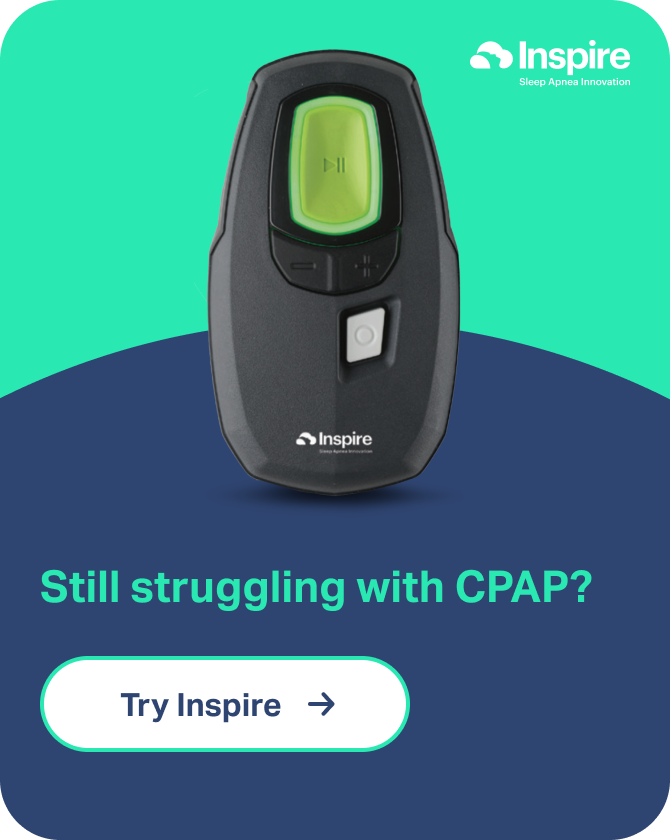
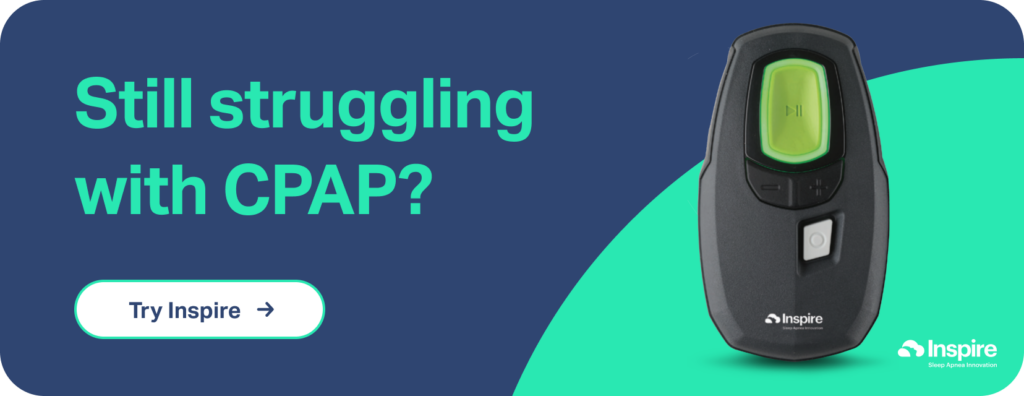
What Is Inspire for Sleep Apnea?
The Inspire Sleep Apnea Innovation is an upper airway stimulation (UAS) treatment designed to open your airway during sleep. This outpatient procedure is intended to make breathing easier and decrease OSA-related symptoms for eligible patients. During the procedure, an Inspire-certified doctor implants a monitoring device in your chest during the procedure. Another incision is made under your chin to implant a nerve stimulator.
The two components work together to monitor your breathing and deliver gentle pulsations to the nerve that controls your tongue’s movement. This stimulation forces your tongue forward to the front of your mouth, clearing your airway so that you can breathe more effectively. Though the device is implanted in your body, it only functions when you turn it on before bed using the companion remote.
How Effective Is Inspire for Sleep Apnea?
Studies show Inspire can improve a patient’s apnea-hypopnea index (AHI), a scale doctors use to measure sleep apnea severity. Scheduling a sleep study is the best way to determine your AHI . During sleep studies, doctors observe the number of times a person stops breathing or breathes shallowly for 10 or more seconds. They calculate the AHI score by dividing that number by how many hours the person was asleep .
A clinical study found that after 12 months of using the Inspire device, 66% of study participants cut their AHI scores by at least 50%. The study also determined that 75% of participants had at least a 25% reduction in oxygen desaturation index (ODI), which measures how frequently a person’s blood oxygen level dips below normal for 10 seconds or longer. The median AHI score decreased by 68%, while the median ODI score fell 70% .
Think You May Have Sleep Apnea? Get Help Today

our partner at sleepdoctor.com
LAST CHANCE: 20% off Home Sleep Tests
Buy Now“Truly grateful for this home sleep test. Fair pricing and improved my sleep!”
Dawn G. – Verified Tester
How Does Inspire Work for Sleep Apnea?
Inspire Sleep Apnea Treatment is a CPAP alternative that opens your airway by moving your tongue forward inside your mouth so that it doesn’t block your breathing passages. The device consists of three major components: a monitor that measures your breathing, a nerve stimulator that adjusts your tongue placement, and a remote.
Implanting the Device
The breathing monitor and nerve stimulator must be implanted in your body during an outpatient procedure. The whole process typically takes about 60 minutes. First, the patient will be put under general anesthesia. A physician will make a small incision under the jawline and attach a tiny cuff onto the hypoglossal nerve, which controls tongue movement. A thin wire connects the cuff to a stimulator device.
The stimulator is implanted using a second incision in your upper chest near your collarbone. A breathing monitor is also placed through this second incision to sit between your ribs. The monitor is then connected to the stimulator so that it can be activated when you stop breathing. After about one month, when the surgical site heals, you can begin using the stimulator.
Nightly Use
Once you are cleared to begin using Inspire, you are in control to activate the device. Before going to sleep, turn on your device with the remote. Once activated, the device implanted in your upper chest begins to monitor your breathing. The device communicates with the nerve stimulator under your chin each time you take a breath, and the stimulator sends a gentle pulse to the nerve that controls your tongue’s motor function. The hypoglossal nerve stimulation causes your tongue to move toward the front of your mouth, clearing up more space for air to pass.
Because the treatment makes it easier to breathe, you’re less likely to snore, stop breathing, gasp, or choke. This can improve your overall sleep quality. The stimulation should not be uncomfortable or painful, but it is noticeable. Some users report that they notice the pulsing sensation beneath their chins while awake, but not after falling asleep. You should not feel discomfort related to the device in your chest.
Inspire Sleep Apnea Side Effects
Getting the Inspire Sleep Apnea Treatment requires outpatient surgery, which comes with inherent risks like infection, pain, and swelling. Additionally, some individuals report temporary tongue weakness for a few weeks following the procedure.
The most common side effects associated with treatment include:
- Tongue abrasion
- Mouth dryness
- Discomfort stemming from the nerve stimulator
Other possible, but less common, side effects are:
- Muscle atrophy
- Partial tongue paralysis
Your doctor can fine-tune your device’s settings to help alleviate these side effects.
Follow-Up Care
Following installation, it takes a few days for basic recovery and about two weeks for most people to resume strenuous activities. You’ll consult with your doctor prior to turning on the device to ensure its settings are correct for your specific needs. Following the consultation with your doctor, you can typically turn on the device 30 days after the procedure and begin treatment. Your doctor should check your device and settings once or twice a year.
The breathing monitor uses a battery with a lifespan of approximately 11 years. When the battery runs low, an additional outpatient procedure is required to get a replacement.
What Are the Eligibility Requirements for Inspire?
The Inspire Sleep Apnea Innovation is not for everyone with sleep apnea. Eligible candidates must meet the following requirements:
- OSA diagnosis: You must already have an obstructive sleep apnea diagnosis with an AHI score between 15 and 100.
- Over 18 years old: You must meet the age requirement. However, some pediatric patients ages 13 to 18 with Down Syndrome may also qualify.
- Tried CPAP therapy: This treatment is only intended for those who have already tried CPAP therapy and found it unsuccessful or intolerable.
- BMI under 40: Inspire Sleep Apnea Treatment has not been tested on people with a body mass index (BMI) over 40.
- Airway exam: An Inspire-trained doctor must examine your sleep study results and perform a nonsurgical airway exam. The physician puts you to sleep with fast-acting medicine, then inserts a camera into your throat to see how your airway opens and closes.
- Other restrictions: People with a diagnosis that contains more than 25% central sleep apnea or mixed sleep apnea do not qualify. The treatment is also not appropriate for those with complete concentric collapse at their soft palate.
When to Talk to Your Doctor
Living with untreated OSA can be harmful and potentially life-threatening. In addition to the general drowsiness and irritability that accompanies sleep apnea, it has also been associated with strokes, heart attacks, hypertension, diabetes, and accidents relating to sleep deprivation. Getting effective OSA treatment can increase your overall quality of life.
If you experience any of the following on a regular basis, you may want to consult with a physician or medical professional:
- Loud snoring
- Long gaps between breaths
- Gasping or choking for air
- Multiple awakenings in one night
- Brain fog during the day
- Excessive sleepiness
- Insomnia
- Morning headaches
- Dry mouth upon waking
Scheduling a sleep study is an excellent way to understand any symptoms you may be experiencing. Speaking with a medical professional can help you better understand sleep apnea and lead you toward effective treatment.
Frequently Asked Questions
Is Inspire approved by the FDA?
Yes, the Inspire Sleep Apnea Innovation is the only internal neurostimulation treatment for obstructive sleep apnea currently approved by the Food and Drug Administration . While the initial approval in 2014 was for people at least 22 years old who met the eligibility requirements, the FDA expanded the age range in 2020 to ages 18 and up .
Is Inspire covered by insurance?
Yes, many major U.S. insurance providers cover Inspire. The cost of Inspire for sleep apnea is largely determined by your policy’s deductible, copays, and out-of-pocket maximum. Be sure to check with your insurance provider to learn whether or not it covers treatment.
Does Medicare cover Inspire for sleep apnea?
Yes, most Medicare plans cover Inspire for patients who have a BMI of 35 or less. Some Veterans Affairs and military hospitals also cover treatment.
Does Inspire work for central sleep apnea?
No, Inspire is not used for patients in which central or mixed sleep apnea accounts for 25% or more of the total AHI index.
Can you get an MRI after Inspire is implanted?
Once you have the Inspire device installed, it’s important to confirm the imaging guidelines that go with that particular model. Some allow for safe, full body MRI scans, while others do not.
However, patients with Inspire implants can undergo torso CT scans, ultrasounds, and X-rays. Those with medical conditions requiring frequent or regular MRIs should consult with their doctors before committing to treatment. Having a pacemaker does not necessarily disqualify you from getting the Inspire treatment.

Still have questions? Ask our community!
Join our Sleep Care Community — a trusted hub of sleep health professionals, product specialists, and people just like you. Whether you need expert sleep advice for your insomnia or you’re searching for the perfect mattress, we’ve got you covered. Get personalized guidance from the experts who know sleep best.
References
8 Sources
-
Strohl, Kingman P. (2020, Sept). Obstructive Sleep Apnea. Merck Manual Professional Version., Retrieved March 17, 2022, from
https://www.msdmanuals.com/professional/pulmonary-disorders/sleep-apnea/obstructive-sleep-apnea -
Spicuzza, L., Caruso, D., & Di Maria, G. (2015). Obstructive sleep apnoea syndrome and its management. Therapeutic Advances in Chronic Disease, 6(5), 273–285.
https://pubmed.ncbi.nlm.nih.gov/26336596/ -
National Heart, Lung, an Blood Institute. (2025, January 9). What Is Sleep Apnea?, Retrieved March 17, 2022, from
https://www.nhlbi.nih.gov/health/sleep-apnea -
Boyd, S. B., Upender, R., Walters, A. S., Goodpaster, R. L., Stanley, J. J., Wang, L., & Chandrasekhar, R. (2016). Effective Apnea-Hypopnea Index (“Effective AHI”): A new measure of effectiveness for positive airway pressure therapy. Sleep, 39(11), 1961–1972.
https://pubmed.ncbi.nlm.nih.gov/27568799/ -
Sahin, M., Bilgen, C., Tasbakan, M. S., Midilli, R., & Basoglu, O. K. (2014). A clinical prediction formula for apnea-hypopnea index. International journal of otolaryngology, 2014, 438376.
https://pmc.ncbi.nlm.nih.gov/articles/PMC4199210/ -
Strollo, P. J., Soose, R. J., Maurer, J. T., de Vries, N., Cornelius, J., Froymovich, O., Hanson, R. D., Padhya, T. A., Steward, D. L., Gillespie, M. B., Woodson, B. T., van de Heyning, P. H., Goetting, M. G., Vanderveken, O. M., Feldman, N., Knaack, L., & Strohl, K. P. (2014). Upper-airway stimulation for obstructive sleep apnea. New England Journal of Medicine, 370(2), 139–149.
https://www.nejm.org/doi/10.1056/NEJMoa1308659 -
American Academy of Sleep Medicine (2014). FDA approves Inspire Upper Airway Stimulation therapy for sleep apnea.
https://aasm.org/fda-approves-inspire-upper-airway-stimulation-therapy-for-sleep-apnea/ -
U.S. Food and Drug Administration (2023). Inspire Upper Airway Stimulation – P130008/S090.
https://www.fda.gov/medical-devices/recently-approved-devices/inspire-upper-airway-stimulation-p130008s090



